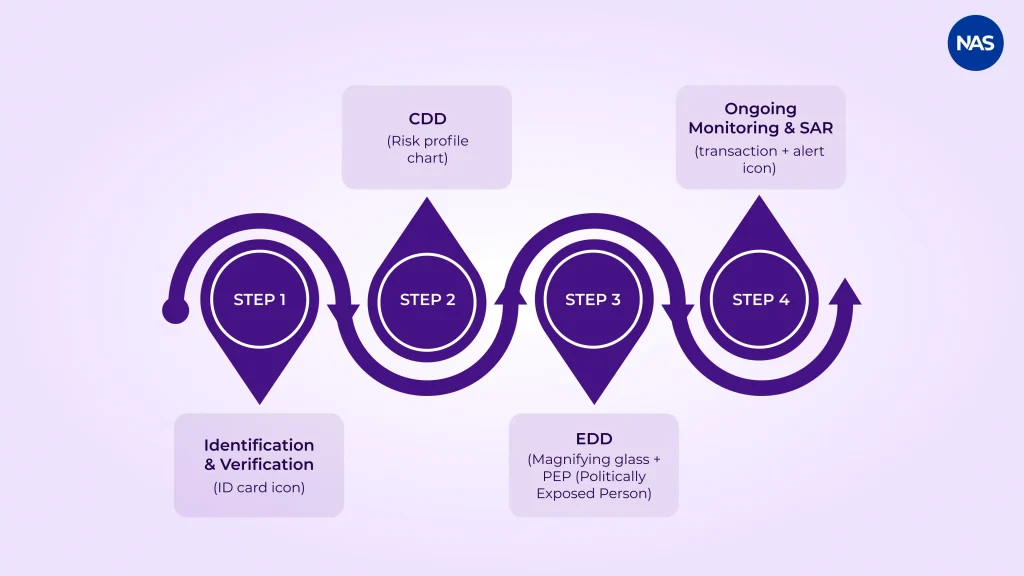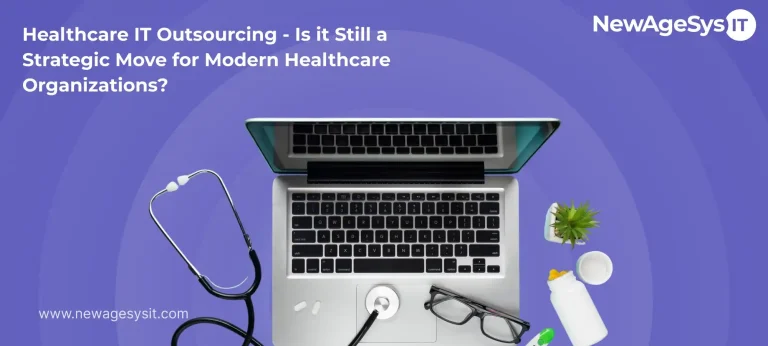| Key Takeaways: There are several purposes that AML KYC regulations serve, which are fraud prevention, curbing money laundering, and stopping financial crimes. Core processes of KYC and AML include tasks like ID verification, due diligence, reporting, and sanction screening etc. The regulations apply to industries beyond banking, fintech, insurance, etc. Some of the compliance challenges revolve around tech requirements, finding skilled staff, ongoing updates, etc. KYC and AML impact businesses by ensuring credibility, smooth onboarding, global growth, and the avoidance of heavy fines. |
Not just banking, fintech, or insurance, but AML KYC compliance requirements spread their roots to industries like real estate, pharmaceutical, gaming, cryptocurrency, etc. And, there is more than one real-world reason why KYC AML guidelines became a reality, for instance:

- In the 1980s and 90s, cartels like Colombia’s Medellin laundered billions through U.S. banks.
- After the 9/11 incident in 2001, the U.S. understood that a stricter implementation of legitimate financial systems needed to be realized to curb such incidents.
- As globalization increased, trillions started to move across borders, requiring common standards like KYC and AML.
- Without such compliance, banks and businesses are always at risk of exploitation from customers.
- The emergence of digital payments, online banking, fintech, and cryptocurrencies has made committing financial crimes much easier.
Basically, the purpose of AML KYC guidelines in the larger picture is to save businesses and general citizens. But then one may think, we do our business with utmost honesty, pay our taxes on time, and penalize people from our organization who exploit our customers, then why should I adhere to it? Well, simply because it’s a mandate, and non-adherence can lead to penalization and punishments.
Some common incidents where it happened are:
- Cryptocurrency exchange BitMEX’s failure to maintain adequate AML and KYC programs earned it a fine of $100 million.
- Barclay got a fine of £42 million for not properly screening a gold bullion firm, which was in a tie-up with a large money-laundering network.
- Paytm Bank was fined for ₹5.4 crore by the RBI (Reserve Bank of India) for multiple KYC failures, like poor owner verification, lack of risk profiling, and V-CIP issues.
Now, after knowing why these regulations came into play and what the consequences are for non-adherence, if you are still stuck at the most important part, i.e., implementation, then fret not.
In our 25+ years of organizational experience, we have helped tons of clients overcome a variety of hurdles, including these. And, by utilizing our knowledge, we have written this article to help you uncover all the necessary nuances to jump over these hurdles with flying colors.
What is AML KYC Compliance?
To clarify what KYC AML guidelines entail, here are their definitions from notable bodies:
AML (as per IBM): AML encompasses the laws, regulations, and procedures aimed to stop criminals from turning illegally obtained funds—“dirty money”—into legitimate—“clean money.”
KYC (as per Persona): KYC (also known as customer due diligence) is the process of verifying a current or prospective customer’s identity and evaluating the risks posed by doing business with them. It serves to protect businesses from fraud and financial crime.
Now, to understand the purpose of KYC and AML, let’s learn about the things they regulate:
| Area | KYC (Know Your Customer) | AML (Anti-Money Laundering) |
|---|---|---|
| Identity | Customer ID check. | Block fake accounts. |
| Due Diligence | Onboarding checks. | Ongoing monitoring. |
| Source of Funds | Verify income/ownership. | Stop illicit funds. |
| Transactions | Match with the profile. | Flag suspicious deals. |
| Beneficial Ownership | Identify UBOs. | Prevent shell misuse. |
| Risk Assessment | Assign risk levels. | Monitor high-risk. |
| Screening | Sanctions/PEP check. | Detect red flags. |
| Record Keeping | Store KYC data. | Keep AML reports. |
| Reporting | Report KYC status. | File SARs/STRs. |
| Industries Covered | Banks, fintech, insurance. | Finance, real estate, crypto. |
Putting a final nail in the thought, here are AML KYC guidelines with real examples:
AML KYC Guidelines (with Examples):
- Customer Identification (CIP)
- Verify IDs like a passport or, license.
- Example: HSBC fined $85M (2020) for weak identity checks.
- Verify IDs like a passport or, license.
- Customer Due Diligence (CDD)
- Assess customer risk levels.
- Example: Danske Bank paid $2B (2022) for failing on high-risk Russian clients.
- Assess customer risk levels.
- Enhanced Due Diligence (EDD)
- Stricter checks for PEPs, offshore, high-risk regions.
- Example: Deutsche Bank fined $150M (2020) for ignoring high-risk clients.
- Stricter checks for PEPs, offshore, high-risk regions.
- Transaction Monitoring
- Detect unusual patterns & large cross-border flows.
- Example: Standard Chartered fined $1.1B (2019) for missed Iran-linked transfers.
- Detect unusual patterns & large cross-border flows.
- Suspicious Activity Reporting (SAR)
- Report suspicious transactions to regulators.
- Example: Wachovia fined $160M (2010) for cartel-linked funds.
- Report suspicious transactions to regulators.
- Record Keeping
- Store KYC & transaction data for 5–7 years.
- Example: JPMorgan fined $250M (2020) for poor AML records.
- Store KYC & transaction data for 5–7 years.
- Sanctions Screening
- Check against OFAC, FATF, UN, and local lists.
- Example: British American Tobacco was fined $635.2 million (2022) for North Korea dealings.
- Check against OFAC, FATF, UN, and local lists.
Purpose and Importance of KYC and AML

By now, we feel you may have gotten a decent idea of the purpose and the importance of KYC and AML. However, for a much clearer understanding, this section has been created.
At the core, the purpose of KYC and AML is to protect the financial system from abuse. There is no single country that controls these regulations. Instead, each country has its own regulations to pull this off. For example, the U.S.A. (Bank Secrecy Act, USA Patriot Act), European Union (6AMLD), United Kingdom (Money Laundering, Terrorist Financing and Transfer of Funds Regulations), India (PMLA), etc.
KYC anti-money laundering compliance has been created in each of these countries to serve three core purposes, which are:
- Financial Transparency – Ensuring that the institutions know about their customers through ID verification and track any unusual transactions.
- Fraud & Crime Prevention – The regulations aim to prevent money laundering, terrorist financing, and identity fraud by blocking any illegal funds entering the financial system.
- Trust Build – Most importantly, to build customer and investor confidence by showcasing that the institutions are operated under global compliance standards.
Penalties and Punishments:
There are no fixed penalties or punishments for non-adherence. However, this also doesn’t mean that the punishments received by companies in earlier examples were random. Rather, they are based on several factors that dominate these penalties and punishments, which are:
- Severity of Violation – Was non-adherence a technical mistake or systematic negligence?
- Volume of Transactions – Larger sums laundered = heavier fines.
- Duration of Non-Compliance – Years of weak controls draw stricter penalties.
- Industry Risk Level – Banks, crypto, casinos, and fintech firms face higher scrutiny.
- Cooperation with Regulators – Companies that self-report and fix issues may get reduced fines.
- Repeat Offenses – Prior violations significantly increase penalties.
AML and KYC Focus in Key Industries
Since we’ve already discussed that AML and KYC regulations are not applied to a single industry, rather a plethora of them, it is important to understand how the focus changes. To simplify, here is a table that covers the focus of all the key industries:
| Industry | AML & KYC Focus |
|---|---|
| Banking & Financial Services | High-risk sector; secure onboarding, transaction monitoring, and fraud prevention. |
| Fintech & Payment Platforms | Fast digital onboarding; strict KYC and AML policy to prevent fraud exploitation. |
| Insurance & Real Estate | Large policies/property deals; identity verification to curb money laundering. |
| Private Funds & Investments | Investor due diligence; compliance with KYC regulations to block illicit capital. |
| Healthcare & Outsourcing | Vendor/client checks; KYC and AML compliance applications ensure trust & safety. |
Global AML KYC Guidelines & Regulations
Just in case you believe that AML KYC compliance is regulated by a single country, that would be completely untrue. But, this doesn’t mean that AML KYC guidelines aren’t regulated.
In fact, quite the opposite, because these guidelines are regulated by an intergovernmental self-regulated body known as the Financial Action Task Force (FATF). Currently, it has 39 full members that include notable economies (USA, UK, Germany, France, Japan, etc.), regional blocs (European Commission, Gulf Cooperation Council), and financial hubs (Singapore, UAE, Hong Kong).
To add, recommendations by FATF for AML and KYC regulations are adopted by 200+ countries and jurisdictions.
Now, let’s look at global AML/KYC compliance:
| Country / Region | Primary AML/KYC Laws & Directives | Key Regulator(s) / FIU | Notes |
|---|---|---|---|
| United States | Bank Secrecy Act (BSA); USA PATRIOT Act; AMLA 2020; FinCEN CDD Rule; OFAC sanctions | FinCEN, OFAC, OCC, FDIC, Fed, SEC, FINRA | Broadest extraterritorial reach; strict SAR/CTR rules |
| European Union (EU) | 4AMLD–6AMLD; Transfer of Funds Reg; upcoming EU AMLA | EBA, ESMA, ECB, and national FIUs | Harmonization across member states; GDPR interplay |
| United Kingdom | Money Laundering Regs MLR 2017 (amend. 2019/2020); Proceeds of Crime Act; Sanctions & AML Act 2018 | FCA, NCA (UKFIU), HM Treasury | Risk-based approach; strong enforcement track |
| Canada | PCMLTFA & regs | FINTRAC | Broad reporting entity coverage, including MSBs |
| Australia | AML/CTF Act 2006 & Rules | AUSTRAC | Phase 2 reforms expanding Designated Services |
| Singapore | MAS Notices (e.g., 626/824/1014); CDSA; TSOFA | MAS | Advanced guidance on e-KYC, VASPs, travel rule |
| India | PMLA 2002 & Rules; RBI KYC Master Direction; SEBI/IRDAI norms | FIU-IND, RBI, SEBI, IRDAI | Expanding coverage (crypto/VDA reporting evolving) |
| United Arab Emirates | Fed. Decree-Law 20/2018; Cabinet Dec. 10/2019; DFSA/FSRA rules | CBUAE, DFSA (DIFC), FSRA (ADGM), EO | Beneficial ownership & DNFBP focus |
| Saudi Arabia | AML Law (2017); Implementing Regs | SAMA, SAFIU | Strong KYC/UBO rules; sanctions screening |
| Japan | Act on Prevention of Transfer of Criminal Proceeds; FIEA | JFSA, NPA, JAFIC | Stringent CDD; FATF-aligned |
| South Korea | Specified Financial Transaction Info Act; VASP rules | KoFIU, FSC/FSS | Early crypto-VASP regulation & travel rule |
| Switzerland | AMLA; FINMA Ordinances; SBA Guidelines | FINMA, MROS | Private banking hub with detailed CDD/UBO |
| Brazil | Law 9,613/1998; Bacen/CMN Resolutions | UIF (ex-COAF), Bacen, CVM | DNFBP coverage (real estate, lawyers, etc.) |
| Mexico | LFPIORPI (Anti-Illicit Proceeds Law) | UIF, CNBV | “Vulnerable activities” list incl. real estate |
| South Africa | FIC Act (FICA) & Amendments | FIC, SARB | Enhanced risk-based KYC; grey-listing response |
| Philippines | AMLA (RA 9160) as amended; BSP Circulars | AMLC, BSP | CDD/EDD for banks & VASPs |
Global Compliance Frameworks for AML/KYC
We have already talked about FATF, but there’s more to the picture. Global AML/KYC frameworks dominate the regulations by providing rules and best practices that businesses and financial institutions can follow. They:
- Define minimum compliance standards across regions.
- Help organizations assess their customers and the transaction risks.
- Guide in creating policies, IT systems, and reporting structures.
- Enable businesses to stay compliant across borders.
Now, here’s a list of compliance frameworks across the globe and a few important regional ones, along with their key focus.
| Framework | Region | Key Focus |
|---|---|---|
| FATF 40 Recommendations | Global | Sets AML/CFT standards; basis for most laws. |
| Basel AML Index | Global | Ranks countries by money-laundering risk. |
| Risk-Based Approach (RBA) | Global | Stricter checks for high-risk, simplified for low-risk. |
| FinCEN CDD Rule | U.S. | Identifies beneficial owners of entities. |
| EU AML Directives (5/6) | EU | Covers crypto, PEPs, terrorism financing. |
AML KYC Process: How It Works?
For each company, the AML KYC process can differ a bit. However, in most cases, the KYC and AML process works in four steps. Let’s go through them:

- Customer Identification & Verification (CIV):
- Collect personal details such as name, DOB, address, and ID proof.
- Verify against official databases available in your country or third-party services.
- Prevent any fake or stolen identities from entering the system as much as possible.
- Customer Due Diligence (CDD):
- Assess customers’ risk levels based on factors like occupation, geography, and transaction behavior.
- Apply standard CDD to clients, ensuring that basic KYC regulations are met.
- Enhanced Due Diligence (EDD):
- For high-risk clients (e.g., politically exposed persons, cross-border dealings, or large transactions), deeper investigations, source-of-funds checks, and stricter monitoring are required.
- For high-risk clients (e.g., politically exposed persons, cross-border dealings, or large transactions), deeper investigations, source-of-funds checks, and stricter monitoring are required.
- Ongoing Monitoring & Suspicious Activity Reporting (SAR):
- Review transactions continuously to detect any anomalies.
- If any suspicious activity is flagged, then institutions must file SARs with regulators.
- Ensure alignment with KYC and AML compliance.
How to Implement KYC and AML Effectively?
To implement KYC and AML in your organization, follow the steps mentioned below:
- Establish Frameworks & Policies
Start by defining internal KYC/AML policies in alignment with the regulations. Hire compliance officers and assign them escalation protocols.
- Leverage Technology & Automation
Ensuring compliance using a manual process can be both time-consuming and costly. A better way to do this would be to use AI-powered verification tools to help you speed up onboarding. And deploy compliance platforms for any real-time AML monitoring requirements.
- Integrate with Core Systems
Now, to ensure that smooth integration, make use of CRM/ERP for any unified client records. Enable automated data sharing and reporting within the system.
- Secure Data Handling
One of the most important aspects for businesses looking to implement KYC and AML. In the process of complying with KYC AML guidelines, lots of personal data is recorded, which is sensitive in nature. So, make sure that you encrypt all the customer data.
This will also help you maintain compliance with regulations like GDPR/CCPA.
- Ongoing Reporting & Audit Trails
At the final step, make sure that all the suspicious activity reports are generated automatically. Also, maintain complete logs for regulators and internal audits.
Challenges Associated with AML KYC Compliance
Achieving AML and KYC regulations is a mandate. However, it can be challenging for many businesses.
Being aware of the most persistent challenges will help you prepare beforehand. So, here’s a list for you to have a look at:
- AML and KYC rules are prone to being updated continuously by regulators like FATF, the EU, RBI, etc.
- Financial institutions are always required to keep track of the evolving global standards while also keeping an eye on country-specific regulations.
- Building compliance frameworks requires large amounts of monetary support for technology, training, and regular audits.
- Skilled compliance professionals are mostly in short supply; therefore, the hiring cost is high.
- Smaller fintechs and startups often end up spending disproportionately just to get AML KYC compliant.
- Multinational companies often have to face overlapping or conflicting requirements from different regions of the world.
- Ensuring seamless compliance across borders in most cases adds to significant operational complexity.
- Compliance is not a “one-time” thing but rather an ongoing process.
- Organizations are required to constantly update their customer profiles, monitor high-risk accounts, and even report suspicious activities.
How NewAgeSysIT Helps Businesses Achieve AML KYC Compliance?
In our long-standing existence of 25+ years, we have catered to numerous complex ideas and provided solutions for multiple regulatory requirements across the globe. This also includes KYC and AML compliance application to multiple business products.
What we have observed so far, in our experience of achieving AML KYC compliance, is that it is not about ticking some regulatory boxes. Instead, effective implementation requires a structured approach, secure infrastructure, and continuous monitoring. So, to provide end-to-end compliance implementation that is tailored to global businesses, our support process includes:
- Gap Assessment – We begin by evaluating the current policies, systems, and workflows of a business, especially for those that go against AML/KYC requirements. In return, we are able to identify gaps and risks.
- Process Design & Implementation – Our team of experts is capable of delivering robust KYC and AML workflows. This ensures that our partner enjoys seamless customer onboarding, risk profiling, and transactional monitoring.
- Secure, Scalable IT Infrastructure – We build compliance-ready IT systems. These systems are capable of handling high volumes of data, integrating with CRM/EMP platforms, and even safeguarding sensitive data.
- Continuous Monitoring & Reporting – Automated reporting, real-time alerts, and audit-ready dashboards are some of the features we employ to maintain a transparent and up-to-date compliance status.
Global Regulatory Coverage – We are based in the U.S.. But, we also provide coverage for EU, APAC, and other regions, ensuring the framework aligns with local and international regulations.
Conclusion
Any law, regulation, or compliance can be seen as a hurdle, a hindrance between our business and its goals. However, think for a second, simply maintaining compliance puts your business so much ahead of other competitors, who may not have taken a serious note of understanding its changing nature. With regulations like AML and KYC, customers feel secure, and institutions feel empowered by the end of the day. Why? Because no one is exploiting them for their own malice, which could be money laundering, moving drug money, or the worst, terrorism.
At the end, we would like to welcome you to partner with us if you want your AML KYC compliance responsibility in capable hands. We are privy to such requirements, and realizing it for different products and services is a cake walk for us, and we promise it will be the same for you.
FAQs:
Q.1 What is AML in KYC?
AML in KYC are the regulations and processes that deal with preventing financial crimes. The two regulations work symbiotically, where at one end KYC verifies customer identity and on the other AML ensures ongoing monitoring to detect or stop money laundering.
Q.2 What is AML and KYC in banking?
Banking institutions use KYC to verify customer identity before any service is delivered to them. And, AML for tasks that are related to monitoring and reporting any suspicious activity, this involves fraud, money laundering, and even terrorism financing.
Q.3 What are KYC and AML IT requirements?
Here are some of the KYC and AML IT requirements:
- Secure data management (AES-256 encryption, PKI)
- Use of identity verification tools (OCR, biometrics)
- Utilization of transaction monitoring systems (ML-based anomaly detection, rules engine)
- Sanctions and watchlist screening (Pep lists, databases)
- Creating audit trails and reporting (Immutable logs, blockchain-based records)
- Scalability and automation (Workflow automation tools, cloud-based systems)
- Cross-border compliance (Compliance management systems)
Q.4 What do KYC and AML regulate?
Both of these regulations regulate different things. Here’s a list:
KYC regulates:
- Verification of customer identity (documents, biometrics, digital checks).
- Understanding customer profiles and their financial behavior.
- Prevention of identity theft and fraud.
- Assurance that only legitimate individuals and entities access financial systems.
- Risk assessment based on customer type, geography, and transactions.
AML regulates:
- Detection and prevention of any money laundering activities.
- Monitoring and reporting of suspicious customer transactions.
- Screening against sanctions lists, PEPs, and adverse media.
- Compliance with global and local financial crime regulations.
- Prevention of financing terrorism, drug trafficking, tax evasion, and other illicit activities.
- Maintaining audit trails and regulatory reporting for transparency.
Q.5 How can a business ensure compliance with the know your customer regulations?
Here are some of the steps a business can take:
- Establishing a robust KYC policy
- Developing a customer identification program (CIP)
- Creating a process for customer due diligence (CDD)
- Real-time monitoring
- Record keeping and creation of audit trails
- Staff training as per AML KYC compliance
- Adopting relevant technologies to boost the process
- Regular compliance audits for gaps
Q.6 What does KYC compliant status mean?
KYC compliant status simply means that the customer or business has successfully completed the process of know your customer required by regulators, banks, or financial institutions.
Q.7 How does AML KYC compliance impact business growth?
AML KYC compliance has multiple positives but several challenges from a business growth perspective. Let’s check them out:
Positive Impacts:
- Builds trust and credibility
- Enables global expansion
- Prevents costly fines and legal issues
- Improves customer onboarding
- Attracts institutional clients
Challenges:
- High cost of compliance
- Slower customer onboarding (for manual or complex verification)
- Operation complexity
Q.8 What is the highest penalty imposed by a business for non-compliance with AML and KYC regulations?
French bank BNP Paribas paid a colossal $8.9 billion penalty in 2014 for laundering funds for sanctioned nations.
Q.9 How can small and mid-sized businesses implement AML and KYC without high costs?
There are several approaches small and mid-sized businesses can take to reduce high costs:
- Risk-based approach (RBA)
- Leveraging SaaS & API-based KYC tools
- Automate wherever possible
- Outsource compliance functions
- Use open-source & affordable tools
- Staff training instead of large tech
- Using shared utilities
Q.10 How often should a business update its KYC and AML policy?
A yearly review or update may be needed in most cases. However, there are several scenarios where businesses can actually think of updating their KYC and AML policies:
- Whenever a new regulation is introduced
- If the business expands to new markets
- There are changes in risk profiles, products, or services
- Regulators issue new guidance
Q.11 How do businesses balance customer experience with AML KYC compliance?
Businesses can balance customer experience with AML/KYC compliance by:
- Using digital onboarding to reduce friction through eKYC, biometric verification, etc.
- Applying risk-based checks
- Leveraging automation and AI for a faster verification process
- Offering transparent communication so that the customers understand
Q.12 Why outsource AML KYC compliance instead of managing it in-house?
Here are some of the ways AML KYC compliance is better off when managed through an outsourcing firm:
- Access to expertise on demand
- Lower costs
- Scalability
- Faster implementation
- Reduce risk of penalties
Q.13 How do AML/KYC processes fit into the customer lifecycle?
AML/KYC covers the entire lifecycle of the customer, and is not limited to onboarding. Here’s a structure in which it flows:
- Onboarding → Identity verification, KYC checks.
- Ongoing Monitoring → Transaction monitoring, risk updates.
- Reporting → Suspicious Activity Reports (SARs) to regulators.
- Offboarding → Account closure if compliance risks are high.
Q.14 What is the core focus of regulators, as of today, for AML/KYC enforcement?
Recent trends have showcased stricter scrutiny on:
- Cryptocurrency & VASPs (Virtual Asset Service Providers).
- Ownership transparency for shell companies.
- Cross-border sanctions compliance.
- PEP (Politically Exposed Persons) monitoring.
Q.15 What are the future trends shaping AML/KYC?
Here are a few notable ones:
- AI & Machine Learning are being used for real-time anomaly detection.
- Blockchain-based records have been employed to create transparent and immutable audit trails.
- RegTech platforms are delivering end-to-end compliance automation solutions.
- Digital ID frameworks like Aadhaar, eIDAS, SingPass, etc., are simplifying onboarding.
- Crypto Travel Rules are required for sender/receiver info in crypto transfers.


























